
OPERATOR’S MANUAL FOR
SPK70000, SPK115000
AND SPK165000
SPAcE hEATERS
Copyright 2006, SUNBELT #37-0920-071806-E/F/S
120039-01
®
C US

2 Operator’s Manual
Introduction
THANK YOU for purchasing this product.
READ THIS MANUAL carefully to learn how to operate
and service your machine correctly. Failure to do so
could result in personal injury or equipment damage.
This manual and safety signs on your machine may
also be available in other languages. (See your dealer
to order.)
THIS MANUAL SHOULD BE CONSIDERED a
permanent part of your machine and should remain
with the machine when you sell it.
MEASUREMENTS in this manual are given in both
metric and customary U.S. unit equivalents. Use only
correct replacement parts and fasteners. Metric and
inch fasteners may require a specic metric or inch
wrench.
RIGHT HAND AND LEFT HAND sides are determined
by facing the motor end of the machine.
The SERIAL NUMBER is located in the Specication
or Identication Numbers section. Accurately record
all the numbers to help in tracing the machine should
it be stolen. Your dealer also needs these numbers
when you order parts. File the identication numbers
in a secure place off the machine.
WARRANTY is provided from your dealer for
customers who operate and maintain their equipment
as described in this manual. The warranty is explained
on the warranty certicate shown in this manual.
This warranty provides you the assurance that your
dealer will back products where defects appear
within the warranty period. Should the equipment
be abused, or modied to change its performance
beyond the original factory specications, the warranty
will become void.

Operator’s Manual 3
Contents
Page
Safety ........................................................................ 4
Controls ................................................................. 10
Assembly .................................................................. 11
Preparation ............................................................... 12
Operation ................................................................ 14
Troubleshooting ..................................................... 16
Service .................................................................... 18
Storage .................................................................... 25
Specications ......................................................... 26
Wire Diagram ............................................................ 27
Warranty .................................................................. 28
Notes ........................................................................ 29
All information, illustrations and specications in this manual are based on the latest
information available at the time of publication. The right is reserved to make changes at any
time without notice.

4 Operator’s Manual
W
A
R
N
I
N
G
W
A
R
N
I
N
G
S
I
N
T
H
E
M
A
N
U
A
L
S
.
W
A
R
N
I
N
G
S
I
N
T
H
E
M
A
N
U
A
L
S
.
C
A
U
T
I
O
N
O
C
A
U
T
I
O
N
S
I
N
O T
H
E
M
A
N
U
A
L
S
O
C
AU
T
I
O
N
S
I
N
O
T
H
E
M
A
N
U
A
L
S
O
C
A
U
T
I
O
N
S
I
N
O
T
H
E
M
A
N
U
A
L
S
O
C
A
U
T
I
O
N
S
I
N
O
T
H
E
M
A
N
U
A
L
S
Safety
RECOGNIZE SAFETY INFORMATION
This is the safety alert symbol. When you see this
symbol on your machine or in this manual, be alert to
the potential for personal injury.
Follow recommended precautions and safe operating
practices.
UNDERSTAND SIGNAL WORDS
A signal word--DANGER, WARNING or CAUTION--is
used with the safety-alert symbol. DANGER identies
the most serious hazards.
DANGER or WARNING safety signs are located near
specic hazards. General precautions are listed on
CAUTION safety signs. CAUTION also calls attention
to safety messages in this manual.
FOLLOW SAFETY INSTRUCTIONS
Carefully read all safety messages in this manual and on
your machine safety signs. Keep safety signs in good
condition. Replace missing or damaged safety signs.
Be sure new equipment components and repair parts
include the current safety signs. Replacement safety
signs are available from your dealer.
Read this owner’s manual carefully and completely before
trying to assemble, operate, or service this space heater.
Improper use of this space heater can cause serious injury
or death from burns, re, explosion, electrical shock, and
carbon monoxide poisoning.
Make certain you read and understand all warnings.
Keep this manual for reference. It is your guide to safe
and proper operation of this space heater.
If you do no understand any part of this manual and need
assistance, contact your dealer.

Operator’s Manual 5
CARBON MONOXIDE - POISONOUS GAS
DANGER: CARBON MONOXIDE POISONING MAY LEAD TO
DEATH!
Space heaters exhaust contains carbon monoxide - a poisonous gas
that can kill you. You CAN NOT smell or see this gas.
Carbon Monoxide Poisoning: Early signs of carbon monoxide poisoning
resemble the flu, with headaches, dizziness, and/or nausea. If you have
these signs, the space heater may not be working properly. Get fresh air at
once! Have space heater serviced. Some people are more affected by carbon
monoxide than others. These include pregnant women, persons with heart
or lung disease or anemia, those under the influence of alcohol, and those
at high altitudes.
Never use a space heater in enclosed or partially-enclosed spaces without
proper ventilation. Use only in well-vented areas. Before using space heater,
provide at least a three-square-foot (2800 square cm) opening of fresh,
outside air for each 100,000 Btu / Hr (30 kw) of rating. Space heaters can
produce high levels of carbon monoxide very quickly. When you use a space
heater, remember that you cannot smell or see carbon monoxide. Even if you
can’t smell exhaust fumes, you may still be exposed to carbon monoxide.
If you start to feel sick, dizzy, or weak while using a space heater, get to fresh
air RIGHT AWAY. DO NOT DELAY. The carbon monoxide from space heaters
can rapidly lead to full incapacitation and death.
If you experience serious symptoms, get medical attention immediately.
Inform medical staff that carbon monoxide poisoning is suspected. If you
experienced symptoms while indoors, have someone call the re department
to determine when it is safe to re-enter the building.
NEVER operate the space heater in an explosive atmosphere, near
combustible materials or where ventilation is not sufcient to carry away
exhaust fumes. Exhaust fumes can cause serious injury or death.
NEVER run space heaters inside homes, garages, sheds, or other semi-
enclosed spaces without proper ventilation. These spaces can trap poisonous
gases EVEN IF you run a fan or open doors and windows. Use only in well-
vented areas. Before using space heater, provide at least a three-square-foot
(2800 square cm) opening of fresh, outside air for each 100,000 Btu / Hr (30
kw) of rating.
If you start to feel sick, dizzy, or weak while using the space heater, shut
if off and get fresh air RIGHT AWAY. See a doctor. You may have carbon
monoxide poisoning.
Install battery-operated carbon monoxide alarms or plug-in carbon monoxide
alarms with battery back-up in your home, according to the manufacturer’s
installation instructions. The carbon monoxide alarms should be certied to
the requirements of the latest safety standards for carbon monoxide alarms.
(UL 2034, IAS 6-96, or CSA 6.19.01).
Test your carbon monoxide alarm frequently and replace dead batteries.

6 Operator’s Manual
SAFETY WARNING WHEN REFUELING
Use only kerosene, #1#2 diesel / fuel oil, JET A or JP-8 fuels to
avoid risk of re or explosion. Never use gasoline, naphtha, paint
thinners, alcohol, or other highly flammable fuels.
Personnel involved with fueling shall be qualied and thoroughly
familiar with the manufacturer’s instructions and applicable
regulations regarding the safe fueling of heating units.
Only the type of fuel specied on the space heater’s data plate
shall be used.
All flame, including the pilot light, if any, shall be extinguished and
the space heater allowed to cool, prior to fueling.
During fueling, all fuel lines and fuel-line connections shall be
inspected for leaks. Any leaks shall be repaired prior to returning
the space heater to service.
At no time shall more than one day’s supply of space heater fuel
be stored inside a building in the vicinity of the space heater. Bulk
fuel storage shall be outside the structure.
All fuel storage shall be located a minimum of 25 feet (762cm) from
space heaters, torches, welding equipment, and similar sources
of ignition (exception: the fuel reservoir integral with the space
heater unit).
Whenever possible, fuel storage shall be conned to areas where
floor penetrations do not permit fuel to drip onto or be ignited by
a re at lower elevation.
Fuel storage shall be in accordance with the authority having
jurisdiction.
Observe all safety regulations for the safe handling of fuel.
Handle fuel in safety containers. If the container does not have a
spout, use a funnel.
Do not overll the fuel tank, leave room for the fuel to expand.
Do not rell fuel tank while the unit is running. Before refueling
the space heater, turn it off and let it cool down.
Fill the tank only on an area of bare ground. While fueling the
tank, keep heat, sparks and open flame away. Carefully clean
up any spilled fuel before starting the unit.
Always ll fuel tank in an area with plenty of ventilation to avoid
inhaling dangerous fumes.
NEVER store fuel for your space heater in the home. Gasoline,
propane, kerosene, and other flammable liquids should be stored
outside of living areas in properly-labeled, non-glass safety
containers. Do not store them near a fuel-burning appliance, such
as a natural gas water heater in a garage. If the fuel is spilled or
the container is not sealed properly, invisible vapors from the fuel
can travel along the ground and can be ignited by the appliance’s
pilot light or by arcs from electric switches in the appliance.

Operator’s Manual 7
ELECTRICAL HAZARDS
DANGER- IMPROPER CONNECTION OF THE
EQUIPMENT-GROUNDING CONDUCTOR CAN
RESULT IN A RISK OF ELECTROCUTION. CHECK
WITH A QUALIFIED ELECTRICIAN OR SERVICE
PERSON IF YOU ARE IN DOUBT AS TO WHETHER
THE UNIT IS PROPERLY GROUNDED.
Use only the electrical voltage and frequency specied on
model plate.
Space heater must be grounded. Use only a properly
grounded three-wire extension cord. Plug into grounded
outlet only. If it should malfunction or breakdown, grounding
provides a path of least resistance for electric current to
reduce the risk of electric shock.
The space heater is a potential source of electrical shock if
not kept dry. Keep the space heater dry and do not use in
rain or wet conditions. To protect from moisture, operate it
on a dry surface under an open, canopy-like structure. Dry
your hands if wet before touching the space heater.
Check that the entire cord is free of cuts or tears and that
the plug has all three prongs, especially a grounding pin.

8 Operator’s Manual
IMPORTANT SAFETY INSTRUCTIONS
1. Use only in areas free of flammable vapors or high dust
content.
2. Minimum clearance from any combustible materials: 8
feet (244 cm) from hot air outlet; 4 feet (122 cm) from
top; and 4 feet (122 cm) from sides and inlet.
3. Locate space heater on a stable and level surface while
hot or operating or a re may occur.
4. Use only in well-vented areas. Before using space
heater, provide at least a three-square-foot (2800 square
cm) opening of fresh, outside air for each 100,000 Btu
/ Hr (30 kw) of rating.
5. Keep children and animals away from space heater at
all times.
6. Never start space heater when combustion chamber is
hot or if fuel has accumulated in combustion chamber.
7. When used with thermostat, space heater may start at
anytime.
8. When space heater is moved or stored, it must be in a
level position or fuel spillage may occur.
9. Use space heater only in accordance with local
ordinances and codes.
10. Never use gasoline, crankcase drainings, naphtha,
paint thinners, alcohol, or other highly flammable
fuels.
11. Never use space heater where gasoline, paint thinner, or
other highly flammable vapors are present.
12. Never use space heater in living or sleeping areas.
13. Never leave a space heater plugged in without adult
supervision if children or animals are likely to be
present.
14. Never move, handle, refuel, or service a hot,
operating, or plugged-in space heater.
15. Never attach duct work to front or rear of space
heater.
16. Never attach space heater to external fuel tank.
17. Space heaters used in the vicinity of tarpaulins, canvas,
or similar enclosure materials shall be located a
safe distance from such materials. The recommended
minimum safe distance is 10 feet (304.8cm). It is
further recommended that these enclosure materials
be of a fire retardant nature. These enclosure
materials shall be securely fastened to prevent them
from igniting or from upsetting the space heater due to
wind action.
18. Unplug space heater when not in use.
19. Never block air inlet (rear) or air outlet (front) of
space heater.
SAVE THESE INSTRUCTIONS
W
A
R
N
I
N
G
W
A
R
N
I
N
G
S
I
N
T
H
E
M
A
N
U
A
L
S
.
W
A
R
N
I
N
G
S
I
N
T
H
E
M
A
N
U
A
L
S
.
C
A
U
T
I
O
N
O
C
A
U
T
I
O
N
S
I
N
O
T
H
E
M
A
N
U
A
L
S
O
C
A
U
T
I
O
N
S
I
N
O
T
H
E
M
A
N
U
A
L
S
O
C
A
U
T
I
O
N
S
I
N
O
T
H
E
M
A
N
U
A
L
S
O
C
A
U
T
I
O
N
S
I
N
O
T
H
E
M
A
N
U
A
L
S

Operator’s Manual 9
WEAR PROTECTIVE CLOTHING
Wear close tting clothing and safety equipment appropriate
to the job.
Wear a suitable hearing protective device such as
earmuffs or earplugs to protect against objectionable or
uncomfortable loud noises.
Operating equipment safely requires the full attention of
the operator. Do not wear radio or music headphones while
operating machine.
INSPECT SPACE HEATER
Be sure all covers, guards and shields are tight and in
place.
Locate all operating controls and safety labels.
Inspect power cord for damage before using. There is a
hazard of electrical shock from crushing, cutting or heat
damage.
Remove all packing items applied to space heater for
shipment. Remove all items from carton. Check items for
any shipping damage. If space heater is damaged, promptly
inform dealer where you bought space heater.
PREPARE FOR EMERGENCIES
Keep a rst aid kit and re extinguisher handy.
Keep emergency numbers for doctors, ambulance service,
hospital and re department near your telephone.
Be prepared if a re starts.
SERVICE SPACE HEATER SAFELY
Before servicing the space heater, shut off unit and allow
unit to cool down.
Service space heater in a clean dry flat area.

10 Operator’s Manual
Controls
A -- Hot Air Outlet
B -- Thermostat Knob
C -- Fan Guard
D -- ON / OFF Switch
w/ Light
E -- Ignition Control Assembly
(On Inside of Side Cover)
F -- Side Cover
CONTROLS
A
B
C
D
E
F
G
H
I
A
B
C
DE
F
G
H
A
B
C
D
E
F
G
H
SPK70000
SPK115000
SPK165000
G -- Fuel Cap / Gauge
H -- Fuel Tank
I -- Air Filter End Cover

Operator’s Manual 11
Assembly
ASSEMBLY
NOTE: For 115 and 165 Models Only
These models are furnished with wheels and a handle.
Some models are furnished with a second handle also.
Wheels, handle(s), and the mounting hardware are found
in the shipping carton.
Tools Needed
• Medium Phillips Screwdriver
• 3/8" Open or Adjustable Wrench
• Hammer
1.
Slide axle through wheel support frame. Install wheel spacers
if provided. Install wheels on axle.
IMPORTANT: When installing wheels, point extended
hub of wheels toward wheel support frame (Fig. 1).
2. Place cap nuts on axle ends. Gently tap with hammer
to secure.
3. Place space heater on wheel support frame. Line up
holes on fuel tank flange with holes on wheel support
frame.
4. Place handle(s) on top of fuel tank flange. Insert
screws through handle(s), fuel tank flange, and wheel
support frame. Attach nut, hand tight after each screw
is inserted.
5. After all screws are inserted, tighten nuts rmly.
Wheel Support
Frame
Fuel
Tank
Flange
Cap Nut
Wheel
Nut
Axle
Extended
Hub
Air
Inlet
Handle
Hot Air
Outlet
Screw
Wheel Spacer
(If Provided)
Cord Cleat with
Bolts and Nuts
Handle
(Fig. 1)

12 Operator’s Manual
Preparation
VENTILATION
WARNING: PROVIDE A FRESH AIR OPENING OF
AT LEAST THREE SQUARE FEET (2,800 SQUARE
CM) FOR EACH 100,000 BTU / HR RATING.
PROVIDE EXTRA FRESH AIR IF MORE
SPACE HEATERS ARE BEING USED. THE MINIMUM
VENTILATION REQUIREMENTS MUST BE
FOLLOWED TO AVOID RISKS ASSOCIATED WITH
CARBON MONOXIDE POISONING. MAKE
CERTAIN THESE REQUIREMENTS ARE MET
PRIOR TO OPERATING SPACE HEATER.
Example: A 200,000 Btu / Hr (58.6kw) space heater
requires one of the following:
• a two-car garage door [16 feet (4.88 meter) opening]
raised 5 inches (12.7 cm)
• a single-car garage door [9 feet (2.74 meter) opening]
raised 8 inches (20.3 cm)
• two, 30 inch (76.2 cm) windows raised 15 inches
(38.1 cm)
FUELS
WARNING: USE ONLY KEROSENE, #1/#2 DIESEL/
FUEL OIL, JET A OR JP8 FUELS TO AVOID RISK
OF FIRE OR EXPLOSION. NEVER USE GASOLINE,
OIL DRAINED FROM CRANKCASES, NAPHTHA,
PAINT THINNERS, ALCOHOL OR OTHER HIGHLY
FLAMMABLE FUELS.
Use only kerosene, #1/#2 diesel / fuel oil, JET A or JP-8 fuels.
Heavier fuels such as No. 2 fuel oil or No. 2 diesel fuel may
also be used but will result in:
• noticeable odor
• additional fuel lter maintenance
• the need for nontoxic, anti-icer additives in very cold
weather
Do not use fuels heavier than No. 2 grade or heavy oils such
as oil drained from crankcases. These heavy oils will not
ignite properly and will contaminate the space heater.
IMPORTANT: Use a KEROSENE ONLY (blue) or DIESEL
ONLY (yellow) storage container. Be sure storage container
is clean. Foreign matter such as rust, dirt, or water will cause
the ignition control assembly to shut down space heater.
Foreign matter may also require space heater’s fuel system
to be frequently cleaned.

Preparation
Operator’s Manual 13
THEORY OF OPERATION
The Fuel System: The air pump forces air through the air line. The air is then pushed through the nozzle. This air
causes fuel to be lifted from the tank. A ne mist of fuel is sprayed into the combustion chamber.
The Air System: The motor turns the fan. The fan pushes air into and around the combustion chamber. This air
is heated and provides a stream of clean, hot air.
The Ignition System: The ignition control assembly provides power to the ignitor. This ignites the fuel / air mixture
in the combustion chamber.
The Flame-Out Control System: This system causes the space heater to shut down if the flame goes out.
Clean
Heated
Air Out
Fuel
Filter
Air Line
To Burner
Air Output Filter
Air Pump
Air Intake Filter
Cool Air In
Fan
Combustion
Chamber
Ignitor
Ignition Co ntrol
Assembly
Air For Fuel
System
Air For
Combustion
And Heatin g
Fuel
Nozzle
Fuel
Tank
Motor

14 Operator’s Manual
Operation
OPERATION
IMPORTANT: Review and understand the warnings in
the Safety Information section. They are needed to safely
operate this space heater. Follow all local ordinances and
codes when using this space heater.
START SPACE HEATER:
1.
Follow all ventilation and safety information.
2. Place the space heater in an area that provides
maximum circulation of the heated air. Follow all location
requirements noted in the Safety Information.
3. Fill fuel tank with kerosene, #1#2 diesel / fuel oil, JET A
or JP-8 fuel.
4. Attach fuel cap.
5. For thermostat models, turn thermostat knob clockwise
to the high position.
6.
Plug space heater’s power cord into approved, grounded,
three-wire extension cord. Extension cord must be at least
six feet (1.8 meters) long.
Extension Cord Size Requirement:
• 6 to 10 feet (1.8 to 3 meters) long, use 18 AWG (0.75 mm
2
)
rated cord
• 11 to 100 feet (3.3 to 30.5 meters) long, use 16 AWG
(1.0 mm
2
) rated cord
• 101 to 200 feet (30.8 to 61 meters) long, use 14 AWG
(1.5 mm
2
) rated cord
7.
Plug extension cord into standard 120 volt / 60 hertz, 3-
prong grounded outlet. Push ON / OFF switch to ON(|)
position and space heater should start in 5 seconds.
(Fig. 2 & 3) If space heater does not start, see
Troubleshooting.
8. Adjust thermostat knob to the desired setting.
Note: A cold space heater may affect the thermostat
setting. This thermostat is a general-heating control.
It is not intended for precise temperature control.
Adjust thermostat until space heater cycles at the
desired setting.
ON/OFF
Switch with
Light
(Fig. 3)
Model: 70
ON/OFF
Switch with
Light
Models: 115 / 165
(Fig. 2)

Operation
Operator’s Manual 15
OPERATION
STOP SPACE HEATER:
Push ON / OFF switch to OFF (O) position. Unplug space
heater when not in use.

16 Operator’s Manual
No power to space heater.
ON / OFF switch not in the ON(|)
position.
Thermostat setting is too low.
Bad electrical connection between
motor and ignition control
assembly or ignition control
assembly and power cord.
Binding pump rotor.
Defective ignition control
assembly.
Defective motor.
Blown fuse or ignitor control
assembly.
Check circuit breaker in electrical
panel.
Verify the ON / OFF switch is in
ON (|) position and light is on.
Turn thermostat knob to a higher
setting.
Check all electrical connections.
If fan does not turn freely, see
"Maintenance: Pump Rotor".
Replace ignition control
assembly.
Replace motor.
See "Maintenance: Ignition
Control Assembly".
Troubleshooting
WARNING: HIGH VOLTAGE. NEVER SERVICE SPACE HEATER WHILE IT IS PLUGGED IN,
OPERATING, OR HOT. SEVERE BURNS AND ELECTRICAL SHOCK CAN OCCUR.
Symptom Problem Solution
Motor does not start ve
seconds after space heater is
plugged in.

Troubleshooting
Operator’s Manual 17
Symptom Problem Solution
Motor starts and runs but
space heater does not
ignite
Space heater ignites but
ignition control assembly
shuts space heater off after
a short period of time.
No fuel in tank.
Pump pressure incorrect.
Dirty fuel lter.
Obstruction in nozzle.
Water in fuel tank.
Bad electrical connection
between ignitor and ignition
control assembly.
Defective ignitor.
Defective ignition control
assembly.
Pump pressure incorrect.
Dirty air intake, air output, and/or
lint lter.
Dirty fuel lter.
Obstruction in nozzle.
Photocell assembly not properly
installed (not seeing the flame).
Dirty photocell lens.
Bad electrical connection
between photocell and ignition
control assembly.
Defective photocell.
Defective ignition control
assembly.
Fill tank with kerosene.
See "Maintenance: Pump
Pressure Adjustment".
See "Maintenance: Fuel Filter".
See
"Maintenance:
Nozzle
Assembly".
Drain and flush fuel tank with
clean kerosene.
Check electrical connections.
Replace ignitor, see
"Maintenance: Ignitor".
Replace ignition control
assembly.
See "Maintenance: Pump
Pressure Adjustment".
See "Maintenance: Air Output,
Air Intake, and Lint Filters".
See "Maintenance: Fuel Filter".
See
"Maintenance:
Nozzle
Assembly".
Make sure photocell boot is
properly seated in bracket.
Clean photocell lens.
Check electrical connections.
Replace photocell.
Replace ignition control
assembly.
WARNING: HIGH VOLTAGE. NEVER SERVICE SPACE HEATER WHILE IT IS PLUGGED IN,
OPERATING, OR HOT. SEVERE BURNS AND ELECTRICAL SHOCK CAN OCCUR.

18 Operator’s Manual
Service
Fuel tank
Air output and lint
lters
Air intake lter
Fuel lter
Ignitor
Fan blades
Motor
Flush every 150-200 hours of
operation or as needed.
Replace every 500 hours of
operation or once a year.
Wash and dry with soap and
water every 500 hours of opera-
tion or as needed.
Clean twice a heating season or
as needed.
No maintenance required.
Clean every season or as
needed.
Not required / permanently
lubricated.
See "Storage: Storing,
Transporting, or Shipping".
See "Maintenance: Air Output,
Air Intake, and Lint Filters".
See "Maintenance: Air Output,
Air Intake, and Lint Filters".
See "Maintenance: Fuel Filter".
See "Maintenance: Fan".
Item How Often How to
MAINTENANCE
PREVENTATIVE MAINTENANCE SCHEDULE:
WARNING: HIGH VOLTAGE. NEVER SERVICE SPACE HEATER WHILE IT IS PLUGGED IN, OPERATING,
OR HOT. SEVERE BURNS AND ELECTRICAL SHOCK CAN OCCUR.

Service
Operator’s Manual 19
WARNING: TO AVOID RISK OF BURN AND
ELECTRICAL SHOCK, NEVER ATTEMPT
TO SERVICE SPACE HEATER WHILE IT IS
PLUGGED IN, OPERATING, OR HOT.
UPPER SHELL REMOVAL:
1. Remove screws along each side of space heater using
5/16" nut-driver. These screws attach upper and lower
shells together. (Fig. 4 or 5)
2. Lift upper shell off.
3. Remove fan guard.
FAN:
IMPORTANT: Remove fan from motor shaft before
removing motor from space heater. The weight of the
motor resting on the fan could damage the fan pitch.
(Fig. 6)
1. Remove upper shell. (Fig. 4 or 5)
2. Use 1/8" allen wrench to loosen setscrew which holds
fan to motor shaft.
3. Slip fan off motor shaft.
4. Clean fan using a soft cloth moistened with kerosene
or solvent.
5. Dry fan thoroughly.
6. Replace fan on motor shaft. Place fan hub flush with
end of motor shaft. (Fig. 7)
7. Place setscrew on flat of shaft. Tighten setscrew rmly
(40-50 inch-pounds / 4.5-5.6 n-m).
8. Replace fan guard and upper shell.
MAINTENANCE (CONTINUED):
(Fig. 4)
(Fig. 5)
Upper Shell
Fan Guard
Screw
Model: 70
Fan
Guard
Upper Shell
Screw
Models: 115 / 165
Motor Shaft
Setscrew
Fan
Motor
Shaft
Fan
Setscrew
Flush
Motor
(Fig. 6)
(Fig. 7)

Service
20 Operator’s Manual
AIR OUTPUT, AIR INTAKE AND LINT FILTERS:
1. Remove upper shell. (Fig. 4 or 5)
2.
Remove lter end cover screws using 5/16" nut-driver.
(Fig. 8 or 9)
3. Remove lter end cover.
4. Replace air output and lint lters.
5. Wash or replace air intake lter (see "Preventative
Maintenance Schedule").
6. Replace lter end cover.
7. Replace fan guard and upper shell.
IMPORTANT: Do not oil lters.
PUMP PRESSURE ADJUSTMENT:
1. Remove pressure gauge plug from lter end cover
(Fig. 10).
2. Install a pressure gauge.
3. Start space heater (See "Operation"). Allow motor to
reach full speed.
4. Adjust pressure. Turn relief valve to right to increase
pressure. Turn relief valve to left to decrease pressure
(Fig. 11). See specications below for correct pressure
for each model.
Model: Pump Pressure:
70 4.7 PSI
115 5.1 PSI
165 5.6 PSI
5. Remove pressure gauge. Replace pressure gauge plug
in lter end cover.
MAINTENANCE (CONTINUED)
:
(Fig. 9)
Air Intake Filter
Lint Filter
Filter End
Cover
Air Output Filter
Model: 70
Air Intake Filter
Filter
End
Cover
Lint Filter
Air Output Filter
Models: 115 / 165
(Fig. 8)
Pressure
Gauge
Plug
Relief
Valve
Model: 70 Shown
(Fig. 10)
Pressure
Gauge
Model: 70 Shown
(Fig. 11)
La page charge ...
La page charge ...
La page charge ...
La page charge ...
La page charge ...
La page charge ...
La page charge ...
La page charge ...
La page charge ...
La page charge ...
La page charge ...
La page charge ...
La page charge ...
La page charge ...
La page charge ...
La page charge ...
La page charge ...
La page charge ...
La page charge ...
La page charge ...
La page charge ...
La page charge ...
La page charge ...
La page charge ...
La page charge ...
La page charge ...
La page charge ...
La page charge ...
La page charge ...
La page charge ...
La page charge ...
La page charge ...
La page charge ...
La page charge ...
La page charge ...
La page charge ...
La page charge ...
La page charge ...
La page charge ...
La page charge ...
La page charge ...
La page charge ...
La page charge ...
La page charge ...
La page charge ...
La page charge ...
La page charge ...
La page charge ...
La page charge ...
La page charge ...
La page charge ...
La page charge ...
La page charge ...
La page charge ...
La page charge ...
La page charge ...
La page charge ...
La page charge ...
La page charge ...
La page charge ...
La page charge ...
La page charge ...
La page charge ...
La page charge ...
-
 1
1
-
 2
2
-
 3
3
-
 4
4
-
 5
5
-
 6
6
-
 7
7
-
 8
8
-
 9
9
-
 10
10
-
 11
11
-
 12
12
-
 13
13
-
 14
14
-
 15
15
-
 16
16
-
 17
17
-
 18
18
-
 19
19
-
 20
20
-
 21
21
-
 22
22
-
 23
23
-
 24
24
-
 25
25
-
 26
26
-
 27
27
-
 28
28
-
 29
29
-
 30
30
-
 31
31
-
 32
32
-
 33
33
-
 34
34
-
 35
35
-
 36
36
-
 37
37
-
 38
38
-
 39
39
-
 40
40
-
 41
41
-
 42
42
-
 43
43
-
 44
44
-
 45
45
-
 46
46
-
 47
47
-
 48
48
-
 49
49
-
 50
50
-
 51
51
-
 52
52
-
 53
53
-
 54
54
-
 55
55
-
 56
56
-
 57
57
-
 58
58
-
 59
59
-
 60
60
-
 61
61
-
 62
62
-
 63
63
-
 64
64
-
 65
65
-
 66
66
-
 67
67
-
 68
68
-
 69
69
-
 70
70
-
 71
71
-
 72
72
-
 73
73
-
 74
74
-
 75
75
-
 76
76
-
 77
77
-
 78
78
-
 79
79
-
 80
80
-
 81
81
-
 82
82
-
 83
83
-
 84
84
Sunbelt SPK70000 Manuel utilisateur
- Taper
- Manuel utilisateur
dans d''autres langues
- español: Sunbelt SPK70000 Manual de usuario
Autres documents
-
Desa GK20 Manuel utilisateur
-
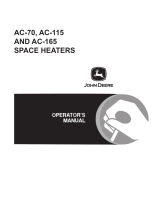 John Deere AC-165 Manuel utilisateur
John Deere AC-165 Manuel utilisateur
-
Master B 35 B 70 B 100 B 150 CED Le manuel du propriétaire
-
Desa T70 Manuel utilisateur
-
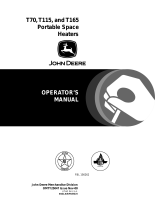 John Deere T70, T115, T165 Manuel utilisateur
John Deere T70, T115, T165 Manuel utilisateur
-
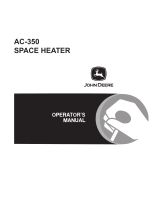 John Deere AC-350 Manuel utilisateur
John Deere AC-350 Manuel utilisateur
-
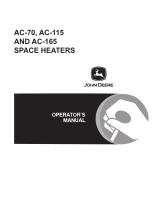 John Deere AC-70 Manuel utilisateur
John Deere AC-70 Manuel utilisateur
-
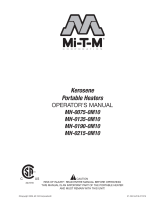 Mi-T-M Kerosene Portable Heater Le manuel du propriétaire
Mi-T-M Kerosene Portable Heater Le manuel du propriétaire
-
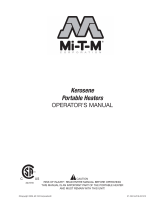 Mi-T-M Kerosene Portable Heaters Manuel utilisateur
Mi-T-M Kerosene Portable Heaters Manuel utilisateur
-
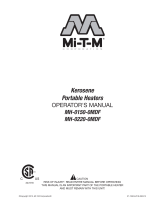 Mi-T-M Dual Fusion Kerosene/Diesel Heater Le manuel du propriétaire
Mi-T-M Dual Fusion Kerosene/Diesel Heater Le manuel du propriétaire


























































































